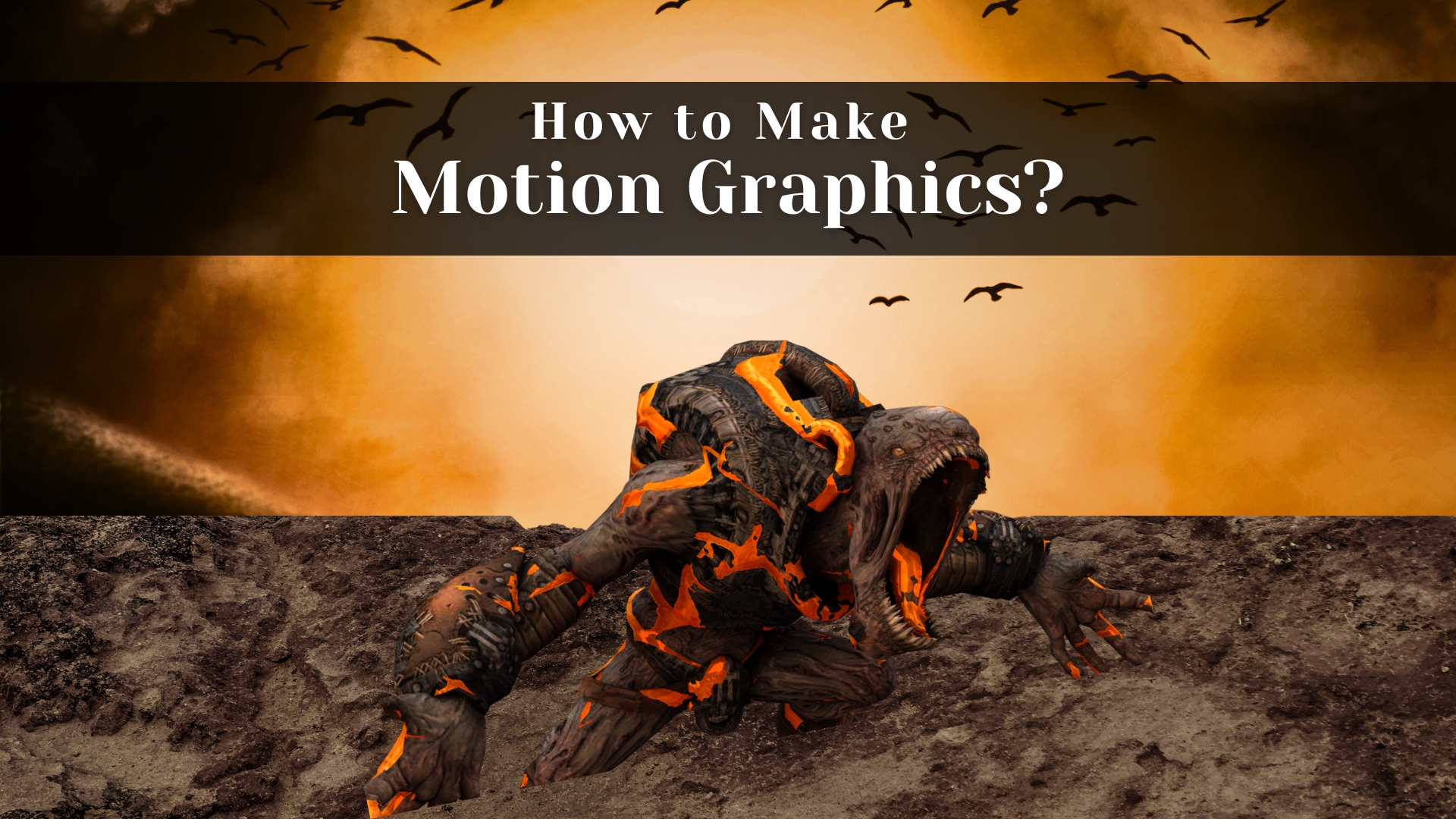Markets nowadays highly rely on video based marketing. From TikTok to explainer videos, every day there is a new innovation that mesmerizes the audience. Meanwhile, the viewers also want to see new and unique innovations every day. The one type of video which is most demanding these days is Motion Graphics. People frequently utilized Motion Graphics Services to enhance the visual appeal of their video presentation, creating a dynamic and engaging experience for my audience.
What is Motion Graphics?
People in the field of videography have often heard the word motion graphics. This team is used interchangeably but as per the technical aspect, motion graphics is a type of animation. In easy words, it is the collision between graphic design and animation. The term motion graphics is used to describe any piece of animated content.
What makes motion graphics a highly demanding type of video is that it helps in conveying a message through the motion of images, utilizing data visualization, kinetic text, and geometric shapes. The idea of motion graphics is more than just that. Different kinds of animation can be used to make a motion graphic, like cel animation, mixed media animation, live-action footage, and even 3D animation. Another key aspect is that motion graphics can be combined with voiceover, and music composition which enables motion graphics to express emotions, convey effective stories, and captivate the audience.
Motion Graphics: An Essential Ally for Brands
Videos have a big role in marketing as it combines both audio and visual processing, enabling people to understand the message easily. But there are some reasons that make motion graphics extremely powerful.
Helpful Tool for Storytelling:
The range of tools that motion graphics hold are capable of telling powerful stories. Whether you want to incorporate moody music, powerful voiceover, or stunning visuals in your video, all can work together, creating an impressive piece of content.
This type of video becomes even more helpful when the story you want to tell is emotional. These videos help people empathize and relate the emotions of the experiences they see on the screen. Whether your aim is to evoke joy or compassion in the viewer, motion graphics are a great way to do it.
Passive Experience for Viewer:
Ever thought about why people love motion graphics? The reason is that it doesn’t ask them to read, explore data or any other type of active participation. The viewer just has to press play and sit back. It is like laying on a comfy couch and having something entertaining come to you.
Motion graphics take this experience to another level. Whether you choose a dynamic animation or a visually appealing presentation, these graphics are made to be a seamless and enjoyable experience for you.
Simplifying the Information Comprehension:
Communication through motion graphic videos is effective because a human brain can easily process visual information. This becomes easy to understand when we see them. Meanwhile, through this type of storytelling, motion graphics help break down complex information delivering the intended message simply and clearly.
Motion graphics videos are extremely beneficial for these reasons:
- It can easily explain how something works.
- It can give life to dense and impenetrable data.
- It can clarify, give context, or explain information.
Can Shorten the Communication Time:
Motion graphics can tell stories quickly. They share a great deal in brief bursts, typically between 30 and 3 minutes. When you want to leave a lasting impression, especially on social media, this is really helpful. According to a Facebook study, even ten seconds of video can increase brand recognition. Motion graphics enable you to convey more with less by utilizing our brain’s ability to digest information through sound and imagery. They can graphically convey anything in a minute, even complex subjects in fifteen seconds. Ideal for noisy settings where sound quality is a concern, such as trade exhibitions. By using creative graphic design services you can revamp your brand’s visual identity, and the results exceeded my expectations.
A Guide on Making Motion Graphics
Creating motion graphics may sound fancy but with a pinch of creativity and some easy-to-use tools, you can make an eyecatching animation.
Step 1: Plan Your Message:
It’s important to have a clear idea of your message before attempting any motion graphic work. What is the key idea or narrative you wish to share? The remainder of the procedure will be guided by a well-defined idea.
Step 2: Select Your Instrument
A professional animator is not a prerequisite for creating motion graphics. Beginners have access to a wide variety of easily navigable tools. Several well-known ones are Blender, Adobe After Effects, and even internet resources like Biteable and Canva. Select a tool based on the complexity of your project and your degree of comfort.
Step 3: Become Acquainted with the Fundamentals
Each tool has a unique set of capabilities. Investigate the fundamentals of your selected tool for a while. Study about timelines, layers, and keyframes—these are the building blocks of creating motion graphics. Don’t be afraid to get started; most tools have tutorials and tips.
Step 4: Make a narrative
Once you have a firm grasp of the fundamentals, create a storyboard. The visual blueprint that describes every scene or frame in your motion graphic is called a storyboard. It resembles a comic strip that you have animated. This facilitates concept organization and guarantees a coherent final output.
Step 5: Design and Animate Your Components
The exciting part is about to begin: designing and animating the motion graphic pieces. This applies to all the graphics you intend to use, including text and photos. Keep an eye on fonts and color palettes to keep your animation looking consistent. Try different movements, effects, and transitions to create a visually captivating motion graphic.
Step 6: Add Audio (Optional)
Sound is optional, however it can improve your motion graphic. You may import audio files with a lot of tools and even make basic sound effects on the platform. If you decide to use audio, be sure it enhances rather than detracts from your images.
However, you can work with the TheDigiwser Animator to bring your project to life, adding a touch of creativity and professionalism to the visual elements.
Conclusion
To wrap it up, creating motion graphics is essentially a visual storytelling and self-expression process. Don’t be scared to try new things and along the road, find your own style. You’ll gain confidence in your ability to produce attention-grabbing motion graphics that successfully communicate your message with practice.



